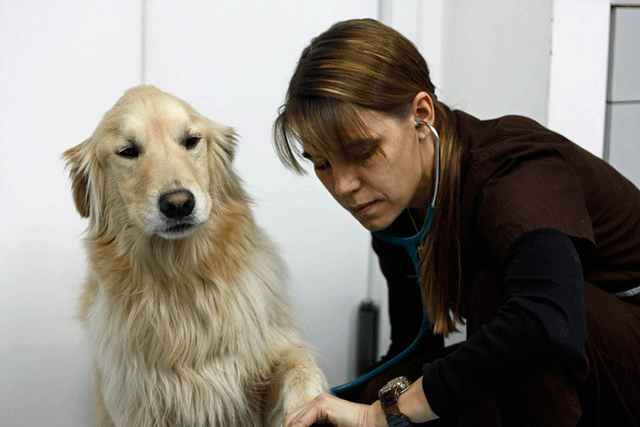Table of Contents
Introduction
Service dogs are dogs that have been trained to assist people with disabilities, whether they be physical or mental. These dogs provide a range of services to their owners, from helping them navigate through public spaces to performing specific tasks to aid with daily activities. The process of training a service dog is a complex and demanding one, requiring extensive knowledge of dog behavior, training techniques, and the specific needs of people with disabilities. In this article, we will discuss what you need to know about service dog training.

What is a service dog?
Service dogs undergo specialized training to assist individuals with disabilities, which can be physical, such as blindness or mobility impairments, or mental, such as anxiety or post-traumatic stress disorder (PTSD). These dogs can carry out various tasks to aid their owners, including fetching objects, opening doors, and providing stability and balance.
What breeds make good service dogs?
Being a service dog is not suitable for all dogs. Breeds that are typically used as service dogs include Golden Retrievers, Labrador Retrievers, and German Shepherds. These breeds are recognized for their intelligence, trainability, and disposition. However, it is important to remember that not all dogs within a breed will make good service dogs. Every dog needs to undergo an individual evaluation.
How are service dogs trained?
Service dogs undergo extensive training to prepare them for their work. The training process typically takes between six months to two years, depending on the dog and the specific tasks it will be trained to perform. The process of training can be divided into three phases:
Basic obedience training: This phase focuses on teaching the dog basic commands such as sit, stay, and come. The dog must master these commands before moving on to more advanced training.
Task-specific training: During this phase, the dog is trained to perform specific tasks to assist its owner. For example, a service dog for a person with mobility impairments may be trained to retrieve items, open doors, and provide stability and balance.
Public access training: Service dogs must be able to behave appropriately in public spaces. This phase focuses on teaching the dog to ignore distractions, stay focused on its owner, and behave calmly in a variety of situations.
Who can train a service dog?
Service dog training is a specialized field that requires expertise in dog behavior, training techniques, and the specific needs of people with disabilities. There are many organizations that provide service dog training, including non-profit organizations and for-profit companies. It is important to choose a reputable organization with experience in service dog training.
Can I train my own service dog?
Certain individuals opt to train their own service dogs. This is known as owner training. However, owner training is a complex and demanding process that requires extensive knowledge of dog behavior and training techniques. It is also important to note that not all dogs are suited to be service dogs, and it can be difficult to determine if a dog has the necessary temperament and skills for the job. If you are considering owner training, it is recommended that you work with a professional trainer with experience in service dog training.
What are the laws regarding service dogs?
Under the Americans with Disabilities Act (ADA) in the United States, service dogs are given legal protection. The ADA defines a service dog as any dog that has undergone individualized training to carry out work or perform tasks that are advantageous to a person with a disability, whether it’s physical, sensory, psychiatric, intellectual, or any other mental disability. Service dogs are permitted to accompany their owners to all public locations, such as restaurants, stores, and public transportation.
It is important to note that emotional support animals and therapy dogs are not considered service dogs under the ADA. These animals do not have the same legal protections as service dogs.
When choosing a service dog, it is important to consider the breed, temperament, and individual characteristics of the dog. Not all dogs are suited to be service dogs, and Every dog needs to undergo an individual evaluation.
Service dog training can be provided by non-profit organizations and for-profit companies, but it is important to choose a reputable organization with experience in service dog training. Some people choose to train their own service dogs, but this is a complex and demanding process that should be undertaken with the guidance of a professional trainer.
Finally, it is important to understand the laws regarding service dogs. Service dogs are protected under the Americans with Disabilities Act (ADA) and are allowed to accompany their owners in all public places. Emotional support animals and therapy dogs do not have the same legal protections as service dogs.
Conclusion
Service dog training is an important and valuable service that helps people with disabilities lead more independent and fulfilling lives. By understanding the process of service dog training and the laws surrounding service dogs, we can ensure that these important animals are properly trained and cared for and that their owners are able to benefit from their assistance.











Leave a Reply